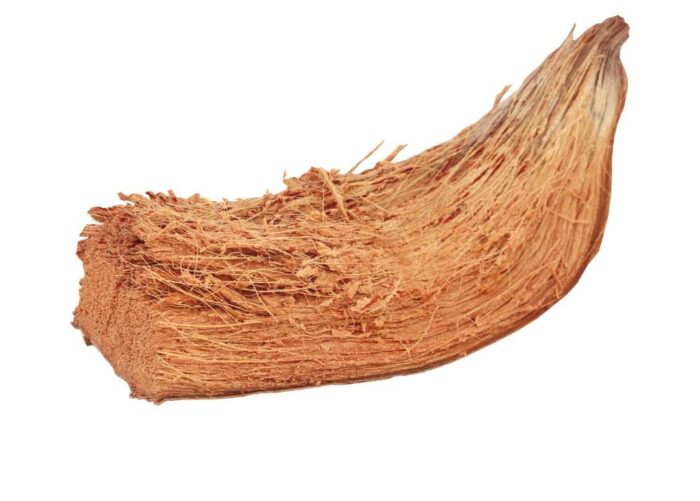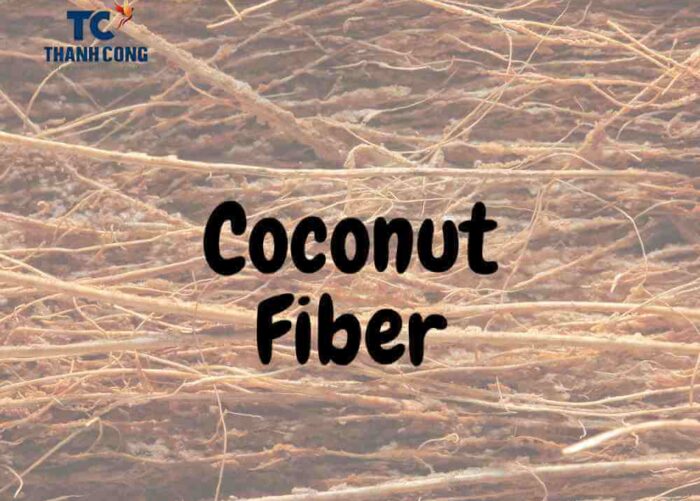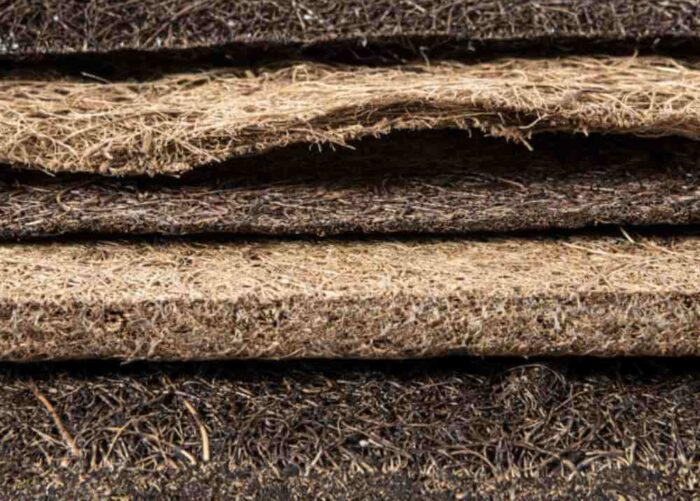The coconut husk is the fibrous outer layer covering the coconut tree’s fruit. It is made up of long fibres that are strong and durable, making it useful in a variety of applications. Coconut husk is a sustainable resource as it is widely available and renewable and can be used in place of other materials that may have a negative impact on the environment.
Coconut husk are used as raw materials for many different industries. Let’s explore the material from coconut husk!
Contents
Material from Coconut Husk
Coconut Coir
Coconut coir, or coco peat, is a natural fibre extracted from the outer husk of coconuts. People use this material as a substitute for peat moss in horticulture and gardening, as it is an eco-friendly, renewable, and sustainable material.
Additionally, gardeners use coconut husk as the agricultural mulch, which helps to conserve moisture and control weed growth, and as a substrate in hydroponic gardening.

Coconut Fibre
Coconut fibre is a coarser material from the long fibres that comprise the coconut husk’s outer layer. It is often used to make ropes, anti-erosion mats, brushes, coconut fiber bird nesting material, and other household and industrial products.
In the construction industry, we also uses coconut fiber as building material. One of the most common uses of coconut fiber in construction is as a reinforcing material for concrete.
Coir fibers are strong, lightweight, and have good tensile strength, making them an excellent alternative to traditional reinforcement materials like steel. Construction workers can also use them as a filler material in concrete blocks, reducing the overall weight of the block and making it easier to handle.
Coir can also be used as insulation for walls, roofs, and floors. It has good thermal insulation properties and is resistant to moisture, mould, and decay. Coir insulation can be installed in mats, batts, or loose-fill.
Another potential use of coconut fiber in construction is in producing boards and panels. Coir fibers can be processed into boards and panels that are lightweight, strong, and resistant to moisture and insects. These boards and panels can be used for various applications, such as wall panels, ceiling tiles, and flooring.

Coconut Shell Charcoal
Coconut shell charcoal is material to control the environment made by burning coconut shells. It is commonly used as a fuel for cooking and heating, as well as in water filtration, air purification systems, and industrial processes such as gold recovery.
Coconut Husk Chips
Coconut husk chips are small pieces of coconut husk used as a growing medium in horticulture and gardening. They are a renewable and sustainable alternative to traditional growing media like peat moss.
Coconut Husk Fiberboard
Coconut husk fiberboard is a building material that compresses coconut husk fibers with a binder. It is a substitute for traditional wood-based fiberboard in construction and furniture making.
Overall, the coconut husk is a valuable and versatile material that can be processed into several useful products. Its use can help promote sustainability and reduce waste.

Advantages of Using the Material from Coconut Husk
The utilization of coconut husk is significant for several reasons. Firstly, it is a sustainable and renewable resource abundant in tropical regions. By utilizing this material, we can reduce the dependence on non-renewable resources and promote sustainability. The coconut husk is often discarded as waste after the fruit is harvested. We can reduce waste and contribute to a more circular economy by repurposing it into valuable materials.
Furthermore, the coconut husk is biodegradable and can be broken down by natural processes without causing harm to the environment. This makes it an eco-friendly alternative to materials that do not biodegrade, such as plastics.
Coconut husk material is often cheaper than other materials, making it an affordable option for various applications. The low cost of coconut husk material is due to its abundant availability, simple processing, and potential to reduce the need for additional materials or inputs.
Finally, coconut husk can be processed into various materials for various applications, making it a versatile resource for different industries.
Overall, the utilization of coconut husk is an essential step towards promoting sustainability and reducing waste while providing a valuable resource for various applications.
Check out for more:
- Coconut Husk Bricks: Benefits and Usage
- Coconut Shell Craft: Ideas You Can Try!
FAQs
Q1: What products are made from coconut husks?
A1: Many different coconut material products such as: coir matting; coir pots; coconut fiber rope, coconut husk mulch, etc.
Q2: What is coconut fiber?
A2: Coconut fiber, also known as coir, is a natural fiber extracted from the outer husk of coconuts. It is a byproduct of the coconut industry and is widely used in a variety of applications due to its durability, water resistance, and natural properties.
The above article is information about “material from coconut husk” topic. If you are interested in these products especially the coconut bowl wholesale, don’t hesitate to send us an email at info@thanhcongcraft.com or leave us a message at WhatsApp: +84967485411. Hope to serve you soon! Best regard!












